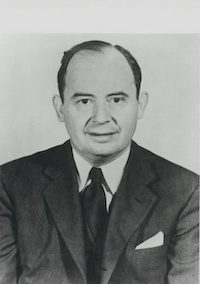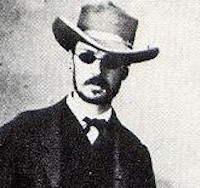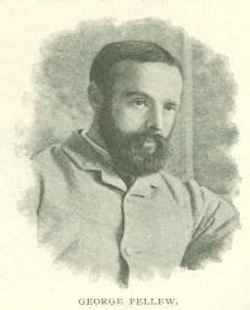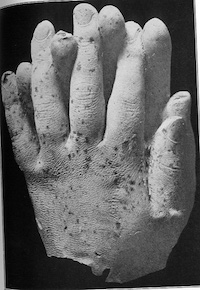Dealing with Pascal’s Wager on Life After Death
Posted on 25 October 2021, 9:03
“We all die,” is the subject line of a recent email sent by the Secular Student Alliance. The message following the subject line urges members to leave a donation – a legacy – that will make the world a better place for others. It goes on to say that the “legacy gift is a charitable vision that serves as a permanent force for good for generations of nonreligious youth to come.” The home page of the organization says it is the largest atheist, humanist, and non-theist organization in the United States. Its goals are to empower secular students to proudly express their identity, build welcoming communities, promote secular values and set a course for lifelong activism. A photo of a dozen or so joyous, liberated young faces is shown – liberated, of course, from the fetters of religions imposed upon them by parents and their culture. They appear totally elated in their nihilistic mindset.
My first thought upon seeing the photo was to wonder if they will have the same joyous smiles in 40 or 50 years, when their loved ones and friends start dying off and when they, too, are so in decline that they struggle to visualize the abyss of nothingness they have imagined not far ahead. But they aren’t supposed to think that far ahead. Eat, drink, shop, play with electronic toys, have sex, escape into fantasyland with fiction, be merry, and thoroughly enjoy the moment is the philosophy instilled in them by Hollywood, the advertising industry, and the secularist worldview.
Most of those I have met or whose comments I have read on the internet seem locked into an angry god and a monotonous heaven. If they’ve heard anything about the strong evidence suggesting that consciousness survives death in a greater reality, absent an angry God and angels singing praise, they’ve checked with Wikipedia and discovered that it is all just so much bunk. “I believe in science,” they haughtily shout, echoing “all-knowing” college professors who have helped them overcome the “false” teachings of their parents. “If you can’t replicate it, it’s fake.” They ask for proof, not really understanding the difference between proof and evidence or realizing that such evidence is not going to reach absolute certainty. (See prior blog on the question of absolute certainty.)
When told by the prime movers of secularism that life is all about making life better for future generations, they don’t stop to think about what “better” means. Is there a point at which life will be as it was for Nero, who fiddled as Rome burned? To which generation full fruition? How much more comfortable and rewarding can we make things for future generations? To what end the progeny? Why is it that I see so many older people on the internet yearning for a return to the lifestyles of the 1950s?
You’d think the young nihilists would at least buy into Pascal’s Wager, which, in effect, says that if you can’t prove that God exists, you are better off betting that “He” does exist. That wager, offered by seventeenth-century philosopher Blaise Pascal, holds that God and an afterlife are concomitants; that is, if there is a God, there must be an afterlife and that such an afterlife must be superior to the material life and to extinction. So many people, both religious and non-religious, approach it deductively, figuring they require proof of God before accepting an afterlife, rather than taking an inductive approach by first examining the evidence for an afterlife and then looking for the God behind it all.
The Fear of Death
The young secularists, atheists, humanists, materialists, rationalists, nihilists, whatever label they prefer, should ponder on the story of John von Neumann (1903-1957), a Hungarian-born American mathematician, physicist, engineer, computer whiz, and overall a polymath and genius. An internet search reveals that he was a professor of mathematics at Princeton, wrote extensively on quantum mechanics, was involved with the Manhattan Project in producing the atomic bomb, and was a pioneer in computer technology. He was born into a Jewish family, one with “ambivalent” religious attitudes. He made a nominal conversion to Catholicism to satisfy his first wife, but continued with an agnostic belief system. He was divorced in 1937. Hans Bethe, a Nobel Laureate, is quoted as saying, “I have sometimes wondered whether a brain like von Neumann’s does not indicate a species superior to that of man.”
After being diagnosed with bone or pancreatic cancer in 1956, Neumann (below) is said to have expressed great fear of death. He despaired to some visitors that “he could not visualize a world which did not include himself thinking within it.” He began having frequent visits from Father Anselm Strittmatter, a Catholic priest, telling the priest that he sided with Pascal and opted for a belief in God over extinction or, as the Church might have preached, eternal damnation. In spite of the visits, his great fear of death continued to his earthly end.

As William James, (below) one of the founders of modern psychology, put it: “The moralist must hold his breath and keep his muscles tense; and so long as this athletic attitude is possible all goes well – morality suffices. But the athletic attitude tends ever to break down and it inevitably does break down even in the most stalwart when the organism begins to decay, or when morbid fears invade the mind.”

It has been my observation that the pillars of humanism erode and crumble as one ages. “Living in the moment,” which is what humanists advocate, is much more difficult as they see themselves nearing “extinction” or “obliteration.” The escape mechanisms they have used to repress the idea of death simply don’t work like they did when they were in their young adult years and so occupied with establishing themselves in careers and raising a family – when there was little or no time to do any real deep thinking about what life is all about and what might or might not come after. When the grandchild gets her tongue pierced, her hair dyed purple, and a full sleeve of tattoos, doubts about progressive progeny enter the mind and the legacy comes into question. It’s when loved ones and friends start dying that the crumbling really accelerates. Finally, when the terminal prognosis is given, the complete collapse takes place.
Humanism to Hedonism
There is much to be said for “living in the moment,” “living in the now,” “living in the present,” “living for today,” “carpe diem,” however it is worded. But so many young people seem to interpret that to mean “have fun at any cost.” Moreover, they do not appear to make a distinction between fun and happiness. Without a moral compass, they don’t know where to draw the line between humanism and hedonism, between self-discipline and self-gratification. They opt for short-term pleasure seeking over long-term peace of mind.
The problem with Pascal’s Wager, as I see it, is that the focus is on a belief in God rather than a belief in an afterlife. It is much easier to come up with evidence for consciousness surviving death than for the existence of God. Pascal lived before the evidence for survival was being thoroughly examined by esteemed scholars and scientists. Unfortunately, the nihilists still assume that one must fully identify and prove God before giving any credibility to the evidence supporting survival, and since God is apparently beyond human comprehension they never get to the real evidence.
One would think that a man of Neumann’s intellect might have examined some of the evidence and would have made a distinction between believing in a Higher Power and consciousness surviving death in a greater reality, but indications are that he bought into the possibility that a non-belief in God meant eternal damnation, as taught by some denominations, and that was his primary reason for going with Pascal’s Wager. I doubt that his belief or non-belief had much of an effect on him after leaving the physical body, other than possibly a slower merging of the lower consciousness with the higher consciousness and thus a slower awakening to the greater reality. As Professor James put it: “If religion be a function by which either God’s cause or man’s cause is to be really advanced, then he who lives the life of it, however narrowly, is a better servant than he who merely knows about it, however much. Knowledge about life is one thing; effective occupation of a place in life with its dynamic currents passing through your being is another.”
I don’t blame the secular students for rejecting religions that teach a wrathful God and a humdrum heaven. Why take Pascal’s Wager if it means curbing an Epicurean lifestyle only to spend eternity floating around on clouds, strumming harps, and praising God twenty-four-seven? And why spend this life doing nothing but preparing for the next life? But that is not what I interpret from the psychical research and related studies being ignored by both orthodox religion and mainstream science. The research and studies suggest a much more dynamic afterlife, one that gives meaning to this life while providing that moral compass. I lament the fact that the secular students have been kept from this knowledge by both religion and science and feel their future anguish – when those smiling faces on the website turn to distress and torture, further condemning God because “He” permits such suffering.
To end by again quoting Professor James:
“The luster of the present hour is always borrowed from the background of possibilities it goes with. Let our common experiences be enveloped in an eternal moral order; let our suffering have an immortal significance; let Heaven smile upon the earth, and deities pay their visits; let faith and hope be the atmosphere which man breathes in; and his days pass by with zest; they stir with prospects, they thrill with remoter values. Place around them on the contrary the curdling cold and gloom and absence of all permanent meaning which for pure naturalism and the popular-science evolutionism of our time are all that is visible ultimately, and the thrill stops short, or turns rather to an anxious trembling.”
It might take secular students a few decades to grasp all that and thereby avoid the trembling, but I fear that it will be too late for some of them to change course.
Michael Tymn is the author of The Afterlife Revealed: What Happens After We Die, Resurrecting Leonora Piper: How Science Discovered the Afterlife, and Dead Men Talking: Afterlife Communication from World War I.
His latest book, No One Really Dies: 25 Reasons to Believe in an Afterlife is published by White Crow books.
Next blog post: November 8
Read comments or post one of your own
|
On Absolute Certainty of Life After Death
Posted on 11 October 2021, 11:11
Upon noting in the introduction of my book, No One Really Dies, that I professed my belief in life after death at 98.8% certainty, Bob Ginsberg of the Forever Family Foundation asked me, during an interview for his radio show, what it would take to get me to 100%. I responded that I don’t believe a person – one fully aware of the alternatives – can ever be at 100% on that issue and, further, that such certainty might not be in our best interest.
Getting to 98.8% from around 25% some 35 years ago took about 20 years of studying psychical research, most of it having taken place before 1920 and having been accepted by some leading scientists of the day. However, resistance on both sides – from the fundamentalists of religion on one side and the fundamentalists of science on the other – prevented it from being widely known or accepted. The churches feared that it conflicted with established dogma and doctrine, while the scientists feared that it meant a return to religious superstitions and folly. No single case did it for me; it was the cumulative evidence that came from the cases summarized in my latest book and many others, but the case of George Pellew (below) was worth a 15-point jump in itself.

Until Pellew died and began communicating through the mediumship of Leonora Piper in 1892, leading researchers preferred to think of all the purported “spirit communication” as coming from telepathy, or mind-reading, by the medium, usually by her “secondary personality” while she was in a trance state. When information came through that nobody present knew about, the researchers theorized that she could tap into minds anywhere in the world or into a “cosmic reservoir.” Although, telepathy, super telepathy, and the cosmic reservoir all defied materialistic science, they were more acceptable to science than spirits of the dead.
However, there was simply too much personality, too much volition, too much give-and-take in the conversations with Pellew to not believe that it was actually the discarnate George Pellew, a lawyer and journalist who had died in an accident at the age of 32, communicating. Since such communication upset the mechanistic and materialistic laws advanced by science, many researchers clung to telepathy and the cosmic reservoir as explanations. Science simply couldn’t accept the idea of life after death. It still can’t. (See my blog of March 11, 2013 in archives for more about Pellew.)
The paraffin hands (below) case, carried out by Professor Charles Richet, a Nobel Prize winner, and Dr. Gustave Geley, a noted French physician, was worth at least 10 points in my climb from 25% to 98.8%. The two scientists asked materialized spirits to dip their hands into a bucket of paraffin, producing paraffin casts of their hands, which are still on display in Paris to this day. Their experiments were carried out behind locked doors with the medium’s hands held by the researchers to completely rule out fraud.

The mediumship of Etta Wriedt, a Detroit, Michigan woman who spoke only “Yankee” English in her normal state but through whom the spirits spoke nine different languages, including Croatian, Serbian, French, Dutch, Norwegian, and Arabic, was another 10-pointer. The mediumship of Laura Edmonds also involved many languages unknown to her, including Hungarian, Portuguese, Italian, and Greek, but she gets only two points because it is not as well recorded as that of Wriedt. Only Laura’s father, Judge John Edmonds, Chief Justice of the New York Supreme Court, reported on Laura’s gift, noting at one point that the deceased son of a Greek immigrant communicated with his father through Laura, the father unaware at the time that his son, who remained in Greece, had died a few days earlier.
The mediumship of Cora Scott Richmond is still another 10 pointer. As young as age 14, she (or the group of 12 advanced spirits said to be speaking through her) gave extemporaneous hour-long lectures on profound subjects far beyond her education and experience. In one case, she (or the spirit speaking through her) replied in sign language.
The Confucius case should get 50 points, but it is so bizarre I give it only five points. It is like asking someone to believe in a 90-yard field goal in football or a mile run in under three minutes. It is so mindboggling that one can only laugh at it. There are a number of other five pointers, but I give only one or two points to most of them, including more modern cases, in getting up to 98.8%
Actually, I’m not sure that I am at 100%, or at absolute certainty, on anything. Newton’s law of gravity seems like something we should all accept with the absolute certainty, but there are enough reports on levitations of both humans and objects by credible scientists for me to believe that there are exceptions to that law. I dealt with some of those exceptions in Chapter Four of the book, while suggesting that the humans are not levitating themselves; they are being lifted by spirit entities. Based on testimony of scientists such as Sir William Crookes, a pioneer in x-ray technology, and Alfred Russel Wallace, co-originator with Charles Darwin of the natural selection theory of evolution, who witnessed levitations, I’m at 99.8% on levitations. Where that leaves me on the law of gravity, I’m not sure. Perhaps I am 100% on the law of gravity, but with exceptions.
I must confess that I am only at 5% certainty (95% doubt) on the existence of an anthropomorphic (humanlike) God, but I am at the same 98.8% on the existence of some Higher or Creative Force that might be called God or Cosmic Consciousness. The 1.2% doubt gives consideration to that cosmic reservoir and its cousins, the Akashic Records, Superpsi, Super ESP and Living-Agent Psi. In effect, it is a “God without an afterlife” view of the matter, perhaps a “computer in the skies” running the whole thing.
“The prima facie most impressive evidence there could be of the survival of a deceased friend or relative would be to see and touch his materialized, recognizable bodily form, which then speaks in his or her characteristic manner,” wrote C. J. Ducasse, a professor of philosophy at Brown University in his 1961 book, A Critical Examination of the Belief in Life After Death. “This is what appeared to occur in my presence on an occasion three or four years ago, when during some two hours and in very good red light throughout, some eighteen fully material forms – some male, some female, some tall, some short, and sometimes two together – came out of and returned to the curtained cabinet I had inspected beforehand, in which a medium sat, and to which I had found no avenue of surreptitious access.”
Whether it was actually his mother or not, Ducasse was fairly certain it was a materialized spirit. “I can say only that if the form I saw which said it was my mother and which patted me on the head, was a hallucination – a hallucination ‘complete’ in the sense just stated – then no difference remains between a complete hallucination on the one hand and, on the other, ordinary veridical perception of a physical object; for every further test of the physicality of the form seen and touched could then be alleged to itself hallucinatory and the allegation of complete hallucination then automatically becomes completely vacuous.”
Ducasse also had an opportunity to examine the ectoplasm giving rise to the materialization in good red light, to touch it, and take ten flash photos of the substance as it emanated from the mouth of the medium. He reported that it did not look, feel, or behave like any other substance known to him. It was definitely not cheesecloth, an explanation often suggested by debunkers.
If my mother were to materialize and appear to me under similar circumstances, I don’t think it would move me to 100% certainty, maybe from 98.8 to 99.0. I might still reason that the reverberation theory offered by parapsychologists to explain apparitions in haunted houses and at battlefields could apply. That is, it is some kind of lingering emotional energy from years ago still existing and transcending time.
To my knowledge these reverberated ghosts do not really offer any communication; however, materialized spirits who have carried on conversations with humans have been reported. Therefore, if my mother were to speak to me in the voice that I remember, about things only she could have known and that I know to be true, I might very well move to 99.5%. But I must then consider the argument that the medium was reading my mind and was a good ventriloquist. I was so enthralled by it all and with the will-to-believe that I just imagined the voice sounded like hers. I was delusional. No way can I go to 100% with those remote possibilities in mind.
If my mother were to mention something my youngest brother did that I knew nothing about, and upon checking with my brother I found it to be true, I should be able to rule out telepathy and consider going to 100%. Still, it might then be argued that I had heard about it, forgot about it, and the medium was able to tap into my subconscious mind or into the cosmic reservoir for the information.
The cosmic reservoir must be programmed like Alexa, the telephone robot connected to my land line who answers questions when I put one to her or plays a musical tune that I ask for. She is quite amazing. Thus, I must consider that the cosmic reservoir was programmed by an Intelligence. That suggests some kind of God, but it doesn’t necessarily mean an afterlife goes along with that God. There is no way I can get to 100%.
If I were able to get to absolute certainty, or 100%, would it make any difference in how I live this life? I don’t think so, at least not very much difference. But it might very well make a difference for those who are at a small degree of certainty, or are now complete nihilists, striving to be “one with their toys.” They might live less hedonistic and more hopeful and loving lives. On the other hand, it might also hold them back in their spiritual progress. It would be a deterrence to free will, prompting them to make decisions based on fear of punishment or a lower state of being in the afterlife rather than for caring and compassionate reasons. It may be that not believing helps them advance in this life.
“It is probable we shall never be able to see behind the veil with the clearness and assurance that Swedenborg claimed to possess, although he warned others off the ground he trod,” physicist Sir William Barrett provided his thoughts on the matter. “There may be, and are, I believe, good reasons for this obscure vision. If everyone were as certain as they are of day following night, that after the momentary darkness of death they would pass into an endless life of brightness and freedom, such as many spiritualists depict, it is possible few would wish to remain on earth. May be multitudes of earth-worn and weary souls would resort to some painless and lethal drug that would enable them to enter a realm where they hoped their troubles would be forever ended. A vain and foolish hope, for the discipline of life on earth is necessary for us all, and none can hope to attain a higher life without the educative experience of trial and conflict.”
Michael Tymn is the author of The Afterlife Revealed: What Happens After We Die, Resurrecting Leonora Piper: How Science Discovered the Afterlife, and Dead Men Talking: Afterlife Communication from World War I.
His latest book, No One Really Dies: 25 Reasons to Believe in an Afterlife is published by White Crow books.
Next blog post: October 25
Read comments or post one of your own
|